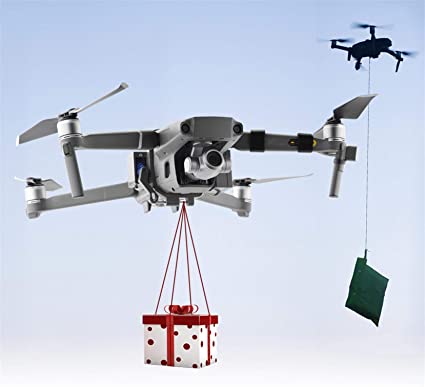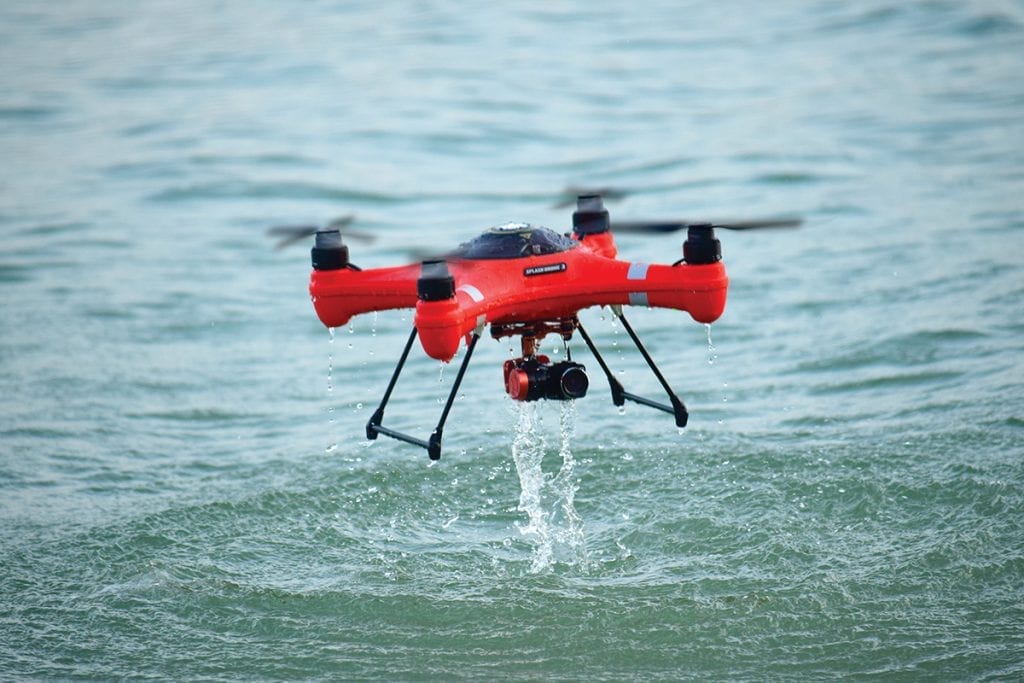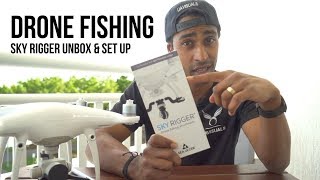
A drone can be used to view the water around your property if you're a keen fisherman living in Australia. The drones can be equipped with a variety of features, including a GPS positioning system, a GPS receiver, a GPS receiver, a GPS payload release, and an angle adjustable camera. Fishing lines can be purchased that are extremely stable and secure. The SKY RIGGER drone is one such example.
SKY RIGGER is a drone fishing line
The SKY RIGGER, a flexible fishing system for drones, allows you fish from the air using minimal effort. Two rotating leg clamps can be mounted to any drone model. The release mechanism includes a bayonet connector and a cam-lock arm, which allows you to quickly unlock the line clamps. Sky RIGGER is unlike other drones and can be used for all types of fishing.
For when a fish strikes your fly, the SKY RIGGER features an automatic release mechanism. You can also release the line manually with your hand or rod. This feature is available for all models of the SKY RIGGER. It is strongly recommended that you first purchase a Phantom 3 before you purchase the new SKY RIGGER. Here are some pros and cons to the new line system.
It features a mechanical payload release
The mechanical payload release is a key feature of a drone. Many of them make it possible for the anglers easy to release the fishing lines. Some models have no release mechanism. Instead, to remove the drone from its fishing line, the user must "yank” it. This can be a tedious process, especially for those who don't feel comfortable using their hands to release it.

The payload release mechanism is another important feature. When a fish strikes, the payload must be able release the line from the drone. This method is not easy to use. You can't just pull the fish up and let it go. Several people have reported good results with the DJI Phantom drone. But, it is still not as advanced as other fishing drones.
It comes with a GPS location system
Rippton is a joint Australian and Dutch venture that specializes in technology-oriented fishing products. It was founded to improve the success rate of anglers by creating products that increase the enjoyment of fishing. Rippton’s Mobula drone comes with a GPS position system and remote release. The Mobula can be used to store bait at the surface and provide resistance against kite clips. It is also environmentally friendly.
It's lightweight, weighing just 3 pounds, and can fly for up to 18 minutes. It has a high tech GPS system that can be controlled from as far as 2,000 meters away. It is capable of flying at 1000 meters (or half a kilometer) range and has intelligent flight modes. It can take high-quality pictures of its surroundings thanks to its point of interest function. You can see great images of fish thanks to its high-resolution digital camera.
It has a failsafe feature
The Aerokontiki fisherman drone comes with a failsafe feature: it monitors the battery level and releases the fishing line when needed. It will return to dry land if the battery runs out and continue its mission. It has industrial-grade flight controls and can operate wherever it goes without recalibration. You can use this drone even in very difficult water conditions.

FAQ
Does the FAA regulate drones?
The FAA oversees all aspects of drone operations, including safety standards, certification requirements, and licensing procedures.
Which US states allow drones?
It is legal to operate a drone as a hobby. Federal Aviation Administration (FAA), has issued guidelines that allow you to use small unmanned aircraft systems (UASs). These UASs have to be registered with FAA before they are allowed to fly. If certain conditions are met, the FAA allows commercial operators to fly these UASs.
What are the rules of operation when using drones?
Register your drone with the FAA. You will need to submit information about your drone including its weight and size as well as operating frequency. The FAA will issue you an identification number.
Is it against the law to fly a helicopter?
Yes, flying drones is illegal in some countries such as Australia, Canada, Germany, Japan, New Zealand, Singapore, South Korea, the United Kingdom, and the United States. It is however legal in many other countries such as France.
Flying with a drone?
Drones are becoming more and more popular for personal and professional use. Drones are used for filming, photography, aerial mapping, search and rescue, as well as other purposes. Recent regulations regarding drones have been approved by FAA. They include new requirements for registration and licensing, pilot training, insurance, and other requirements. These changes will ensure that drones continue to be safe for all.
Statistics
- According to industry research from ZipRecruiter , there are 10 cities where the typical salary for a Drone Pilot job is above the national average. (dronesgator.com)
- According to Indeed, a drone pilot gets paid $25.73 per hour on average in the US. (dronesgator.com)
- According to ZipRecruiter, the minimum hourly wage of drone pilots is $20. (thedroneu.com)
External Links
How To
How to Fly Drones for Beginners
A drone is a remote-controlled aircraft used for aerial photography, cinematography, surveillance, scientific research, and hobby purposes. Drone technology has been around since World War II. However, commercial use began in 2010 when DJI released their Phantom series of quadcopters. Many types of drones have been made available since then, from beginner-friendly models such as the Parrot AR Drone 2.0, to high-end multi-rotor craft such as the DJI Mavic Pro.
There are many ways to fly a drone.
-
Remote control: This uses a remote control device that attaches to your hand and allows you control the drone along its flight path. There are two main types, On/Off switches (like radios) and joysticks.
-
Manual Control- This allows you to control your drone remotely via GPS coordinates. You will need to keep track of where the drone is going and follow the directions from the app.
-
Autonomous Flight: This means that the drone will take care of all the piloting. The drone is able to fly autonomously, without the need for human intervention. It must have a builtin camera, sensors capable of taking images and data to enable autonomous flight.
-
Triggered Flying - This method works in the same way as manual control. However, the pilot has to manually set up a route for the drone and it follows that route until reaching the endpoint. After the program is complete, the drone automatically returns to the ground.
-
Landing Gear – Some drones are equipped with landing gear, which allows them to safely land if they lose power during flight.
-
Goggles-Some pilots use goggles to protect their eyes from debris during operations.
-
Camera - Some drones can be equipped with cameras which enable you to capture photos from the sky.
-
Obstacles – Some drones have obstacle avoidance systems that stop them from colliding with obstacles.
-
Speed – Some drones can reach speeds in excess of 40 mph.
-
Battery Life – Most drones will last 20 minutes to three hours depending on how powerful they are.
-
Some drones have a range of up to 30 miles, depending on their model.
-
Power source - Some drones require an external power source; others work off internal batteries.
-
Weight - Some drones weigh less than 1 pound, whereas other models weigh up to 4 pounds.
-
Size - Drones come in many sizes, from small gadgets that fit in one's hands to large craft that weigh more than 50 lbs.
-
Price - From high-end models that cost thousands of dollars to low-cost options that start at $100, all drones fall under a certain price category.